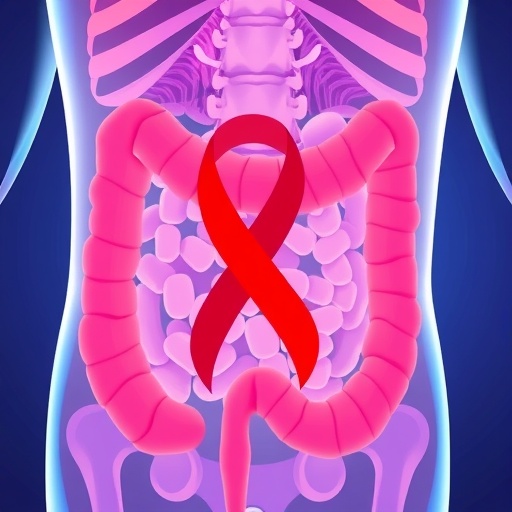The intersection of human immunodeficiency virus (HIV) and human papillomavirus (HPV) infections represents a critical public health challenge, particularly in regions where both diseases persist at high prevalence rates. A groundbreaking study conducted in Addis Ababa, Ethiopia, sheds light on the prevalence of high-risk HPV (hrHPV) infection and the occurrence of cervical lesions among women living with HIV (WWH). This large-scale investigation comprehensively characterizes HPV type distribution and explores associated factors, delivering critical insights that could reshape screening protocols and interventions for vulnerable populations.
Ethiopia, like many countries in sub-Saharan Africa, faces the compounded burden of HIV and cervical cancer. Despite this, knowledge about specific HPV genotypes circulating among women with HIV and their relationship with cervical abnormalities remains fragmentary. The recent research harnessed data from 16 health facilities offering HPV-DNA testing within Addis Ababa, targeting a cohort of 3,303 WWH screened from April 2021 to January 2022. Such an expansive sample provides robust epidemiological evidence and underscores the urgency of addressing co-infection risks in HIV-positive cohorts.
This rigorous retrospective record review utilized both self-collected and clinician-collected cervical swab specimens to ascertain the presence of HPV DNA, focusing on identifying high-risk strains linked with oncogenic potential. By integrating HPV testing into antiretroviral therapy (ART) clinics, the study effectively leveraged existing healthcare infrastructure to implement cervical cancer screening, a vital component often overlooked in resource-limited settings.
Findings from this investigation reveal a striking hrHPV infection prevalence of 28.7%, a figure that exceeds earlier regional estimates. Notably, HPV 16 and HPV 18—historically recognized as the most oncogenic strains—were detected in 15.3% and 4% of positive cases, respectively. However, the majority of infections (73.3%) fell under the umbrella of “other high-risk HPV” genotypes, underscoring the complex HPV landscape within this population. The discovery of multiple hrHPV infections in 7.4% of women further complicates clinical management and highlights the importance of genotype-specific surveillance.
Age emerged as a significant determinant of hrHPV infection risk. Women aged between 25 and 29 showed a 68% higher likelihood of harboring hrHPV compared to those within the 40–49 age bracket. This suggests a critical window for targeted screening and preventative strategies, emphasizing the necessity for age-tailored health interventions. Contrastingly, marital status exerted a protective influence; married and widowed women exhibited lower odds of infection than their divorced counterparts, possibly reflecting variations in sexual behavior or exposure.
Upon identifying hrHPV-positive women, the researchers engaged them in visual inspection with acetic acid (VIA) screening—a cost-effective, accessible method to detect cervical lesions. Out of 948 HPV-positive participants, 786 underwent VIA follow-up, revealing a concerning 15.5% positivity rate. This high detection rate signals a substantial burden of cervical intraepithelial neoplasia within this group and calls for reinforced follow-up mechanisms to mitigate progression to invasive cervical cancer.
Further analysis illuminated a significant association between a history of sexually transmitted infections (STIs) and VIA positivity. Women with prior STIs were 69% more likely to exhibit cervical lesions, implicating persistent mucosal inflammation or immunological alterations that may predispose the epithelium to neoplastic transformation. This interrelation accentuates the intricate dynamics between multiple sexually transmitted pathogens and highlights the need for integrated sexual health services.
While sub-Saharan Africa’s healthcare systems contend with logistical and financial constraints, this study advocates for concerted efforts to expand hrHPV screening among HIV-positive women. Screening not only facilitates early detection but also enables genotype characterization that informs vaccine strategies and patient management. For instance, identifying the predominance of “other hrHPV” types may prompt consideration for broader-spectrum vaccines in regional immunization programs.
The study further emphasizes the value of combined HPV-DNA and VIA screening, particularly in settings where cytological services are unavailable. The high prevalence of cervical lesions detected post-hrHPV identification suggests that VIA can effectively triage patients needing intensified surveillance or treatment. Strategic implementation of such dual screening modalities promises to optimize resource utilization and improve clinical outcomes in low-resource environments.
Understanding the factors influencing HPV infection is crucial in tailoring public health interventions. The prominence of younger women and the interplay with marital status and prior STIs provide actionable demographic and behavioral targets for education and prevention campaigns. Moreover, these insights reinforce the necessity to destigmatize cervical screening and promote sustained engagement with healthcare providers, especially among divorced women who may face unique social challenges.
Importantly, the findings from Addis Ababa echo global concerns regarding the heightened vulnerability of women with HIV to persistent HPV infection and cervical neoplasia. Immunosuppression induced by HIV compromises viral clearance, increasing the risk of persistent infection and malignant transformation. This study quantifies this risk within the Ethiopian context and provides an evidence base to advocate for integrating cervical cancer prevention into comprehensive HIV care models.
The research presents critical data with implications far beyond Ethiopia’s borders. By highlighting the substantial hrHPV prevalence and revealing gaps in current screening coverage, the study serves as a clarion call for policymakers, clinicians, and researchers to prioritize cervical cancer as a preventable HIV-related complication. It also challenges international stakeholders to assist in funding and capacity building for HPV testing and lesion management in resource-scarce settings.
In conclusion, the high prevalence of hrHPV infection among women with HIV in Addis Ababa elucidated by this study accentuates the urgency of comprehensive cervical cancer screening programs tailored to this vulnerable population. The intricate distribution of HPV genotypes, combined with associated risk factors such as age, marital status, and STI history, provides a multifaceted understanding that can guide effective intervention strategies. Ultimately, bridging the gap between HIV care and cervical cancer prevention will be critical to reducing morbidity and mortality associated with these interlinked diseases in Ethiopia and similar contexts worldwide.
Subject of Research: Prevalence of high-risk human papillomavirus infection and cervical lesions among women living with HIV in Addis Ababa, Ethiopia.
Article Title: Prevalence and factors associated with high-risk human papillomavirus infection and cervical lesions among women with HIV in Addis Ababa, Ethiopia.
Article References:
Tesfom, H.N., Gizaw, M., Yilam, M. et al. Prevalence and factors associated with high-risk human papillomavirus infection and cervical lesions among women with HIV in Addis Ababa, Ethiopia. BMC Cancer 25, 1557 (2025). https://doi.org/10.1186/s12885-025-14832-3
Image Credits: Scienmag.com
DOI: https://doi.org/10.1186/s12885-025-14832-3
Tags: Addis Ababa health study on HPVcervical cancer prevention strategiescervical cancer risk factors in sub-Saharan Africacervical lesions and HIV co-infectionepidemiological evidence in HIV-positive womenHigh-risk HPV prevalence in HIV-positive womenHPV type distribution in EthiopiaHPV-DNA testing in HIV cohortsintersection of HIV and cervical health risks.oncogenic HPV strains in cervical abnormalitiespublic health challenges of HIV and HPVscreening protocols for vulnerable populations





